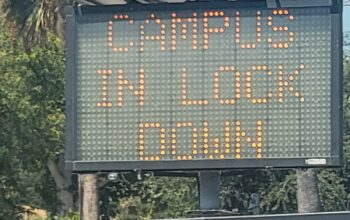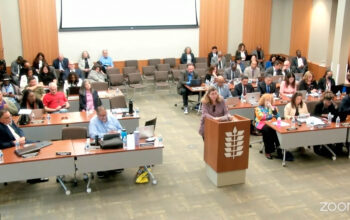The Los Angeles Community College District (LACCD) Chancellor Francisco C. Rodriguez directed all LACCD faculty and students to follow the “Safer at Home” health order yesterday.
This follows the decision made by California Gov. Gavin Newsom on March 19 to expand the shelter-in-place command statewide, potentially limiting the spread of COVID-19.
The mandate states that all California residents who do not have an essential job, such as working at a hospital or at a grocery store, are to stay home until April 19. It also calls for the closure of non-essential businesses and areas.
LACCD faculty who work for the academic and business continuity of the District are required to go to their workplace, for now.
“While we are still technically ‘open,’ the vast majority of [LACCD] services and buildings are closed to the public as we transition to a remote work and learning environment,” Rodriguez wrote in a news release on March 19.
The “Safer at Home” order is now in effect by the County of Los Angeles Health Officer. It includes prohibiting all private and public group events within the Los Angeles Public Health Jurisdiction that have 10 or more people in attendance.
Those who fail to comply will risk receiving a fine, imprisonment or both.
Newsom’s statewide decision was livestreamed from Sacramento, California Thursday evening via Facebook.
In response to why April 19 was made the cut-off date, he said that it was more of an open-ended directive.
“This is a dynamic situation,” Newsom said. “We could put a two-week deadline, but it gives people a false sense of what to expect. I don’t expect this to be many many months, but for the time being we are recognizing these next eight weeks as it relates to this virus in particular.”
He also urged Californians to be judicious when deciding to go outside for non-essential reasons and urged people to practice social distancing.
“We want to get that curve down,” Newsom said. “We want these numbers to be in the dustbin of history, as irrelevant to the experience that we’re all about to have.”
Secretary of the California Health and Human Services Dr. Mark Ghaly said he worked with a team for the past four weeks to create a model for California that applied potential COVID-19 attack rates, infectivity ratios and hospitalization rates.
The model was made in collaboration with the Centers for Disease Control and Prevention.
“It’s put us in a great position with our partners across the state to be prepared for what we are starting to see, which are hospitals with many patients and patients who are in the ICU,” Ghaly said. “We feel like we are well prepared because of that planning to meet this moment and be prepared for what’s coming up in the days and weeks to come.”




